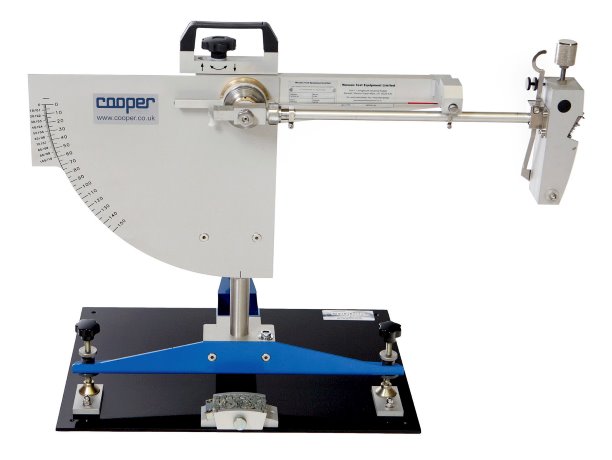The Ontario Ministry of Transportation (MTO) has developed significant expertise in assessing the frictional qualities of coarse aggregate in hot mix asphalt pavement.
The ministry is currently adapting that tried-and-true methodology to examine the frictional properties of fine aggregate in concrete highways.
Staff researchers are relying on two "old faithfuls" to conduct the research— the British Wheel or Accelerated Polishing Machine (APM) and the Portable Skid Resistance Tester (PSTR) — also known as the British Pendulum Friction Tester (BPFT) — devices which have served the roadbuilding community for more than 50 years.
The APM is used to "age" a road surface sample, as though it’s been exposed to extensive vehicle traffic.
For asphalt testing, coarse aggregate specimens are carefully placed in a sample mould, filling the empty spaces with Ottawa sand — from a silica plant in Ottawa, Illinois, not Ontario. The samples are then bound with polymer and the sand is removed to expose the aggregate for testing.
The finished sample, called a coupon, is set and clamped around the circumference of a large steel wheel with the exposed aggregate in close contact with a small rubber tire.
The wheel rotates a set of coupons under the tire for six hours as pre-measured quantities of emery abrasives and water are fed into the unit to induce polishing of the aggregate, simulating traffic exposure.
"The challenge with concrete was in preparing the test specimens representing road surface samples," says Stephen Senior, an engineer with MTO’s Materials Engineering and Research Office.
"The samples for coarse aggregate are easier to conform to the shape of the sample moulds. With concrete, you need to create an actual mortar for testing and this is something we hadn’t done before."
Some of the initial mortar coupons cracked under polishing.
However, the researchers eventually developed a method to create samples that would consistently hold up to testing.
In all, the researchers polished mortar samples containing 29 natural fine aggregates found in Ontario glacial deposits that conformed to Ontario Provincial Standard Specification 1002.
The polished samples were then tested for friction on the BPFT.
The original PSTR device was developed by Percy A. Sigler, chief of walkway-surface research at the U.S. National Bureau of Standards in the late 1940s.
Sigler’s original machine attached shoe heel material to the bottom of a pendulum, then allowed the pendulum to sweep over sample walkway surfaces to determine the coefficient of friction.
The less the pendulum swung past the walking surface, the greater the measured friction between the two materials. The British pendulum works in the same way.
Applied to the evaluation of road surfaces, the pendulum test uses a rubber surfaced pendulum skimming the sample of the road surface.
In the laboratory, the procedure is known as the Polished Stone Value (PSV) test. For concrete, it’s known as the Polished Mortar Value (PMV) test.
"It was MTO’s first application of the PMV," says Senior.
"What made it different and more challenging to compare the samples is the degree to which the friction of the pavement surface is influenced by the surface texture. In asphalt, a portion of the pavement friction is derived from the microtexture of the exposed coarse aggregate.
"For concrete, the mortar is exposed, making the fine aggregate more significant in contributing to the friction of the pavement surface."
While the results of the research are preliminary, Senior says that the test provides a good foundation for refining and developing fine aggregate testing for concrete road surfaces.
"We hope to eventually be able to draw conclusions about the use of each of the fine aggregates we currently use and how their properties will affect road friction over time," he says.











Recent Comments
comments for this post are closed